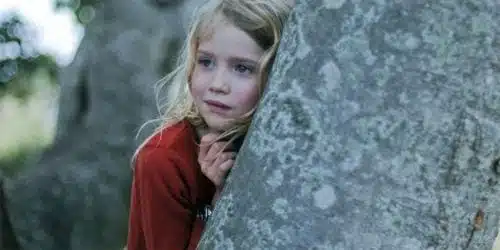
What if your dad died suddenly and then his spirit came back and inhabited the tree that grew by your house? This is what happens to eight-year-old Simone (Morgana Davies) in Julie Bertuccelli’s touching family drama The Tree. The grieving little girl gains comfort from her belief that her father is not gone, just dislocated somehow and talking to her through the sound of the wind in the branches.
This film is undoubtedly full of heartfelt sentiment, but it does not wallow in misery. On the contrary the young family, led by their mother Dawn (Charlotte Gainsbourg), find the positive in the fallout from their bereavement.
Based on Australian writer Judy Pascoe’s 2002 novel Our Father Who Art in the Tree, this bears all the hallmarks of ‘coming-of-age’ and self discovery drama, but in this case has magic realism as an added ingredient. We are never sure whether Simone’s voices are real or not; this is left ambiguous and intriguing. When the tree seems to turn nasty and its fallen branches cut a gash across the side of the wooden house, crushing the marital bed of the widowed Dawn, it makes us think that there might be something to this possession idea. We had previously seen Dawn experience her first joy in the year since her husband’s death when, after a couple of beers, she kissed her new boss, George the plumber (Marton Csokas).
The family inhabit a plot of land in the Queensland countryside, with only a small town nearby. They have a simple, pioneer-type lifestyle belonging to a different era. This is reinforced with the panoramic shots of the landscape and the journey that the father takes at the beginning transporting a wooden house across country. The story has a stripped down feel to it therefore, focussing on the intimate lives of the family within the landscape and alongside nature.
Their grief is played out in a dry-eyed, non-hysterical fashion. Not what we have come to expect in many ways of contemporary film-making. Charlie, the youngest child, just stops speaking – a much more accurate psychological portrayal of a child who has encountered such an event very early on in life. Bertuccelli’s style is developed from documentary making and also working as assistant director to such names as Krystof Kieslowski. She shows off a crispness of style and use of images that supports the narrative and insists upon ambiguity and questions.
When the forces of nature take over and seem to threaten the family, their vulnerability is on show and the fragile figure of Gainsbourg as the mother takes on a more complex and powerful symbolism as she strives to keep her children safe. This enables the film to sit well alongside other Australia-based narratives that witness childhood innocence within a powerful, potentially threatening and mystical situation, such as Nicolas Roeg’s Walkabout (1971) and Peter Weir’s Picnic At Hanging Rock (1975). These are part of the pioneer story-telling tradition of a young culture in an ancient landscape.
The image of the child Simone in the branches of the huge tree, which she has decorated with little totemic symbols of her father, has a spiritual and dramatic quality and makes for a suitable emblem for this juxtaposition. It sums up how people navigate the new and the strange, and come to understand their place within the world.
By staying clear of any sweetness and sticking with a naturalistic, unaffected style, Bertucelli gets the best from her young cast members. This is explored fully in the ‘making of’ documentary on the extras; which is also an amusing exposé of the international collaborative film-making process as Australian crew members come to terms with their French co-producers.

